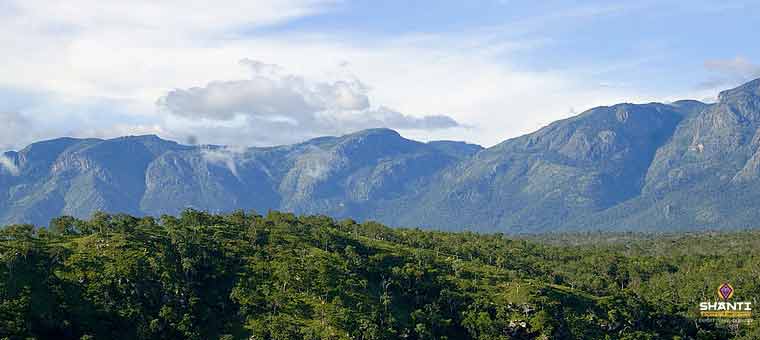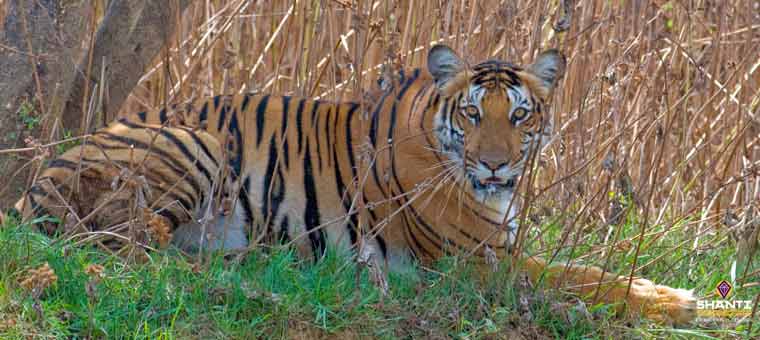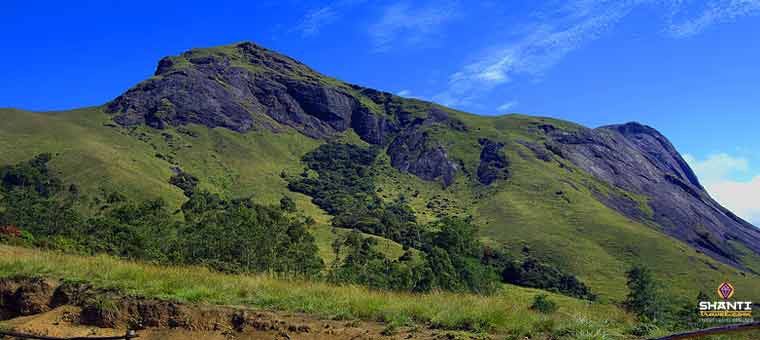 South India, home to some of the most exotic species of birds, animals, fish, insects and plants, is a wildlife haven. Nearly 25% of the world’s population of tiger is found in the southern peninsula. Other fascinating fauna seen in the wild here include various species of Antelopes, Sambhar, Bison, Deer, Elephants, wild ducks, water fowl, Hornbills, Chital, Bears and a host of reptiles and amphibians. The picturesque landscapes, waterfalls, lakes, forests and backwaters make a wildlife tour of South India a delight for photographers and nature lovers alike.
South India, home to some of the most exotic species of birds, animals, fish, insects and plants, is a wildlife haven. Nearly 25% of the world’s population of tiger is found in the southern peninsula. Other fascinating fauna seen in the wild here include various species of Antelopes, Sambhar, Bison, Deer, Elephants, wild ducks, water fowl, Hornbills, Chital, Bears and a host of reptiles and amphibians. The picturesque landscapes, waterfalls, lakes, forests and backwaters make a wildlife tour of South India a delight for photographers and nature lovers alike.
The Nilgiri Biosphere Reserve, covering parts of Nilgiri Hills and Western Ghats in the Southern states of Tamil Nadu, Kerala and Karnataka, is India’s first biosphere reserve and the biggest wildlife attraction of South India. It encompasses a number of protected areas including Bandipur National Park, Nagarhole National Park, Madumalai Wildlife Sanctuary, Wayanad Wildlife Sanctuary and Silent Valley National Park. A South India wildlife tour would be incomplete without visiting one or more of the following wildlife hotspots.
Nagarhole National Park
The park, a mere 50 kilometres from the city of Mysore in Karnataka, derives its name from “Naga” which in Kannada means snake, and “Hole” meaning streams. Also called Rajiv Gandhi National Park, it is a designated tiger reserve. The park has beautiful waterscapes, rich forest cover, gentle slopes and valleys and is separated from the Bandipur National Park by the Kabini river reservoir. With its luxuriant jungles and bamboo thickets, it provides the perfect habitat for large populations of Asian Elephants and the Indian Bison (Gaur), besides leopards, the endangered Wild Dog (Dhole), sloth bears, hyenas, smooth-coated otters, over 250 species of birds and several snakes and reptiles. The taller hills within the park also offer beautiful views of the surrounding coffee estates and old historical forts built by the rulers of Mysore.
Bandipur National Park
 Once the private hunting grounds of the Maharaja of Mysore, Bandipur National Park was established as a tiger reserve under Project Tiger in 1973. It lies 80 kilometres out on the road from Mysore to Ooty, a popular hill station, and hence attracts a lot of tourists on their South India wildlife tour. Hundreds of elephants can be spotted in herds during the monsoon rains. The park houses a good number of tigers, bisons, grey langurs, leopards, sloth bears, wild boar, sambhar, barking deer, turtles, crocodiles, rock pythons, hoopoes and vultures. The park is also famous for its variety of timber trees such as Teak, Rosewood, Sandalwood and Clumping Bamboo. Beautiful rivers, gorges and mountains surrounding the Bandipur national park give it a breathtakingly beautiful character.
Once the private hunting grounds of the Maharaja of Mysore, Bandipur National Park was established as a tiger reserve under Project Tiger in 1973. It lies 80 kilometres out on the road from Mysore to Ooty, a popular hill station, and hence attracts a lot of tourists on their South India wildlife tour. Hundreds of elephants can be spotted in herds during the monsoon rains. The park houses a good number of tigers, bisons, grey langurs, leopards, sloth bears, wild boar, sambhar, barking deer, turtles, crocodiles, rock pythons, hoopoes and vultures. The park is also famous for its variety of timber trees such as Teak, Rosewood, Sandalwood and Clumping Bamboo. Beautiful rivers, gorges and mountains surrounding the Bandipur national park give it a breathtakingly beautiful character.
Eravikulam National Park
The largest national park in Kerala, Eravikulam national park is situated within 13 kilometres of the popular hill station of Munnar in Idukki district. The largest surviving population of Nilgiri Tahr, an endangered deer species, is protected here. It is also home to 25 other mammalian species including the Indian muntjac, golden jackal, jungle cat, Indian porcupine, dusky palm squirrel, Nilgiri Marten and the striped-neck mongoose. The highest peak of South India, Anamudi, lies within this park. A new critically endangered reddish-orange species of frog, the Resplendent Shrubfrog, was recently discovered here and is currently known to live only within 3 square km area of Anamudi peak in the Eravikulam national park. The pristine Lakkom waterfalls in the heart of the park serve as a tranquil stopover on an inherently exciting South India wildlife tour.
Kalakkad Mundanthurai Tiger Reserve
It was established in 1988 by merging the Kalakkad and Mundanthurai wildlife sanctuaries into a tiger reserve. It forms a part of the Agasthyamalai Biosphere Reserve spanning parts of Tamil Nadu and Kerala. Its core region is one of the five centres of biodiversity and endemism in India as per the IUCN. Sambhar, chital, Nilgiri tahr, wild pig, gaur, lion-tailed macaque, bonnet macaque, mouse deer and slender loris, among others, are found in abundance here. A host of tea estates, small hamlets and tribal habitations can also be seen in and around the area.
Chinnar Wildlife Sanctuary
Also located in the Idukki district of Kerala, Chinnar wildlife sanctuary lies within Annamalai Hill cluster and along with other regions of the Western Ghats, it is under consideration for the status of a UNESCO World Heritage Site and hence a must-include in your itinerary for a South India wildlife tour. The Chinnar and Pambar rivers flow through the sanctuary, with the sparkling Thoovanam waterfalls on Pambar River serving as a peaceful haven deep within the forest. Rare and vulnerable species found in the sanctuary include the Albino Bison, Nilgiri Tahr, Rusty-spotted cat, Indian star tortoise and Yellow-throated bulbul. Kerala’s largest population of Mugger Crocodiles and the world’s second largest population of the Grizzled giant squirrel also inhabit the Chinnar wildlife sanctuary. A whopping 156 species of butterflies and nearly 1000 kinds of flowering plants lend a swath of colour and charm to the place. A lofty watch tower standing in the middle of the shola forest affords a panoramic view of the entire sanctuary and surrounding mountains.
Plan a South India wildlife tour on your next holiday to get a delectable taste of the rich natural heritage and biodiversity spanning the Indian subcontinent. Go for treks, picnics and adventures in the hills. Get lost in the jungles. Learn the language of the birds and animals. Eventually come back home utterly rejuvenated and closer to nature than ever before.
Check our program “From the Elephant Trail to Ocean” to customize your South India wildlife tour.








